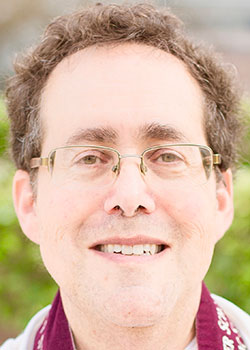When I first came to Congregation Eilat, in Mission Viejo, California, fresh out of Rabbinical School, many of my congregants were struck by how young I seemed. How, they wondered, could this kid be our rabbi? Others responded by trying to help me in the areas of my deficiencies, one of which is my lack of knowledge of the Yiddish language. One congregant in particular made it his business to teach me important Yiddish expressions. He was certain that these phrases captured the essence of Jewish wisdom and could spell the difference between a successful rabbinate and a disaster.
I gratefully accepted his willingness to educate this greenhorn, and will now share with you, my reader, the very first term he taught me: A “pintele Yid.” The phrase is said with a finger pointing toward one’s own heart. It means that no matter how distanced one may become, there is always a Jewish point deep within, some small spark waiting to be ignited when the time is right. Every Jew has this “pintele Yid” and therefore every Jew is worth the effort to bring back to a life of Jewish wholeness and holiness.
I love that concept, since I love the Jewish people and spend much of my effort trying to help Jews gain access to the wisdom and depth of their own traditions. I see myself as their stewards, maintaining in good order what is really their possession—the Torah, the mitzvot, Jewish values and traditions. The notion of a pintele Yid, a spark within every Jew that can blaze up with the light of Torah means that we must never give up on anyone.
But where did that strange phrase come from? That was a question that my congregant couldn’t answer. I put the issue out of my mind, since there were far more pressing concerns for a rabbi to research.
Imagine my pleasure, a few years later, when I found the answer in a note from my colleague, Rabbi Maurice S. Kaprow. In this week’s Torah portion, God describes Moses as “very meek, more so than were all the men upon the face of the earth.” The Hebrew word for meek is “anav,” which is normally spelled with four Hebrew letters: Ayin-Nun-Yud-Vav. In this instance, however, the Torah spells the word Ayin-Nun-Vav. The Yud is missing.
The ancient rabbis surmised that the missing Yud was a sign of Moses’ meekness. How? Because Yud is the first letter of God’s name, and Moses left it out when he was transcribing God’s description of himself to avoid even the appearance of comparing himself to God.
Where did that missing Yud go? It is buried deep within the soul of each and every Jew: Hence the Pintele Yud, which became the pintele Yid.
That transformation makes the phrase even more extraordinary. Moses left out the Yud to avoid saying that there was a divinity within. Yet Jewish tradition transformed the Yud (the letter signifying God’s name) into Yid (meaning, a Jew). God is not only within each Jewish soul, but God’s name becomes, in effect, each Jew—no matter how non-observant, no matter how far removed from a life of holiness or of mitzvot.
Indeed each person is a new expression of godliness, a new rendition of God’s ineffable name. Each one of us reflects God in a way that no other person ever did or ever will. That pintele Yid is our reminder that holiness attends every person and is something that no person can take from another. Our sense of self, our inalienable dignity and worth is rooted in the sacred spark inside every human being.
And that flame takes a special kind of attention to be able to reignite into the full flame of Sinai. Through careful cultivation, the ability to blow fresh air on the sparks—not too hard, and not too little—the steward of the heart can hope to excite an unlearned Jew with the wealth that Judaism and Jewish tradition offer. Not through sermons, but through experience, a seeking soul can come to know the beauty of Shabbat, the power of davvening, the reward of bikkur holim (the mitzvah of visiting the sick). By offering the pathway of the mitzvot, the spiritual guide can hope to lead his or her ward to the deep pools of inner peace and true wisdom. Ultimately, the notion of a pintele Yid means we don’t have to push too hard because we can trust the inner depths of our students to bring their own resonance to the Torah we offer. In holding out the wisdom of Torah and mitzvot, we know that our students will see a mirror of themselves.
That pintele Yid is still dozing, waiting for your prodding, your caring, and your example.
Shabbat shalom.

